"Arctogalidia trivirgata." Beyond the Beauty. Retrieved August 4, 2014.
- Available at: http://beyondthebeauty.com/css/arctogalidia-trivirgata
"Arctogalidia trivirgata." Scientific Library. Retrieved August 4, 2014.
- Available at: http://www.scientificlib.com/en/Biology/Animalia/Chordata/Mammalia/ArctogalidiaTrivirgata01.html
“Arctogalidia trivirgata (Gray, 1832).” The Marine Biological Universal Biological Indexer and Organizer. Retrieved August 4, 2014.
- Available at: http://www.ubio.org/browser/details.php?namebankID=105786
"Arctogalidia trivirgata (Javan Small-toothed Palm Civet)." ZipcodeZoo: Species Identifier 2304. Retrieved August 4, 2014.
- Available at: http://zipcodezoo.com/animals/a/arctogalidia_trivirgata/
Arnold, Michael L. 2008. Reticulate Evolution and Humans: Origins and Ecology. Oxford University Press.
Bauer, Chris. 2013. "Arctogalidia trivirgata: Small-toothed Palm Civet (On-line)." Animal Diversity Web. University of Michigan Museum of Zoology. Retrieved August 4, 2014.
- Available at: http://animaldiversity.ummz.umich.edu/accounts/Arctogalidia_trivirgata/
Bell, D.; Roberton, S.; and Hunter, P. R. 2004. "Animal Origins of SARS Coronavirus: Possible Links with the International Trade in Small Carnivores." Philosophical Transactions of the Royal Society of London, Series B, Biological Sciences 359:1107-1114.
Bewick, Thomas. 1800. A General History of Quadrupeds. With figures engraved on wood by T. Bewick. Fourth Edition. Newcastle upon Tyne: S. Hodgson, R. Beilby, and T. Bewick.
- Available via Internet Archive at: https://archive.org/details/generalhistoryof00bewi
Bisby, F.A.; Roskov, Y.R.; Orrell, T.M.; Nicolson, D.; Paglinawan, L.E.; Bailly, N.; Kirk, P.M.; Bourgoin, T.; Baillargeon, G.; and Ouvrard, D. (red.). 2011. "Arctogalidia trivirgata (Gray, 1832)." Species 2000 & ITIS Catalogue of Life: 2011 Annual Checklist. Reading, UK. Retrieved August 4, 2014.
- Available at: http://www.itis.gov/servlet/SingleRpt/SingleRpt?search_topic=TSN&search_value=621982
Boelens, Bo; Watkins, Michael; and Grayson, Michael. 2009. The Eponym Dictionary of Mammals. Johns Hopkins University.
Borissenko, A. V.; Ivanova, N. V.; and Polet, G. 2004. "First Recent Record of the Small-toothed Palm Civet Arctogalidia trivirgata from Vietnam." Small Carnivore Conservation 30:5-6.
Boudet, Ch. 10 January 2009. "Species Sheet: Small-toothed Palm Civet, Three-striped Palm Civet, Three-streaked Paguma." Mammals' Planet: Vs n°4, 04/2010. Retrieved August 4, 2014.
- Available at: http://www.planet-mammiferes.org/drupal/en/node/38?indice=Arctogalidia+trivirgata
Boudet, Ch. 10 January 2009. "Subspecies Sheet [Arctogalidia trivirgata bancana]." Mammals' Planet: Vs n°4, 04/2010. Retrieved August 4, 2014.
Boudet, Ch. 10 January 2009. "Subspecies Sheet [Arctogalidia bicolor]." Mammals' Planet: Vs n°4, 04/2010. Retrieved August 4, 2014.
Boudet, Ch. 10 January 2009. "Subspecies Sheet [Arctogalidia trivirgata depressa]." Mammals' Planet: Vs n°4, 04/2010. Retrieved August 4, 2014.
Boudet, Ch. 10 January 2009. "Subspecies Sheet [Arctogalidia trivirgata fusca]." Mammals' Planet: Vs n°4, 04/2010. Retrieved August 4, 2014.
Boudet, Ch. 10 January 2009. "Subspecies Sheet [Arctogalidia trivirgata inornata]." Mammals' Planet: Vs n°4, 04/2010. Retrieved August 4, 2014.
Boudet, Ch. 10 January 2009. "Subspecies Sheet [Arctogalidia trivirgata macra]." Mammals' Planet: Vs n°4, 04/2010. Retrieved August 4, 2014.
Boudet, Ch. 10 January 2009. "Subspecies Sheet [Arctogalidia trivirgata major]." Mammals' Planet: Vs n°4, 04/2010. Retrieved August 4, 2014.
Boudet, Ch. 10 January 2009. "Subspecies Sheet [Arctogalidia trivirgata mima]." Mammals' Planet: Vs n°4, 04/2010. Retrieved August 4, 2014.
Boudet, Ch. 10 January 2009. "Subspecies Sheet [Arctogalidia trivirgata minor]." Mammals' Planet: Vs n°4, 04/2010. Retrieved August 4, 2014.
Boudet, Ch. 10 January 2009. "Subspecies Sheet [Arctogalidia trivirgata simplex]." Mammals' Planet: Vs n°4, 04/2010. Retrieved August 4, 2014.
Boudet, Ch. 10 January 2009. "Subspecies Sheet [Arctogalidia trivirgata stigmaticus]." Mammals' Planet: Vs n°4, 04/2010. Retrieved August 4, 2014.
Boudet, Ch. 10 January 2009. "Subspecies Sheet [Arctogalidia trivirgata sumatrana]." Mammals' Planet: Vs n°4, 04/2010. Retrieved August 4, 2014.
Boudet, Ch. 10 January 2009. "Subspecies Sheet [Arctogalidia trivirgata tingia]." Mammals' Planet: Vs n°4, 04/2010. Retrieved August 4, 2014.
Boudet, Ch. 10 January 2009. "Subspecies Sheet: Indian Small-toother [sic] Palm Civet." Mammals' Planet: Vs n°4, 04/2010. Retrieved August 4, 2014.
Boudet, Ch. 10 January 2009. "Subspecies Sheet: Javan Small-toothed Palm Civet." Mammals' Planet: Vs n°4, 04/2010. Retrieved August 4, 2014.
- Available at: http://www.planet-mammiferes.org/drupal/en/node/39?indice=Arctogalidia+trivirgata+trilineatus
Boudet, Ch. 10 January 2009. "Subspecies Sheet: Three-striped Palm Civet, Malayan Small-toothed Palm Civet." Mammals' Planet: Vs n°4, 04/2010. Retrieved August 4, 2014.
Boudet, Ch. 10 January 2009. "Subspecies Sheet: White-eared Musang." Mammals' Planet: Vs n°4, 04/2010. Retrieved August 4, 2014.
Cassell's Universal Portrait Gallery: A Collection of Portraits of Celebrities, English and Foreign. With Facsimile Autographs. 1895. London, Paris & Melbourne: Cassell and Company, Limited.
- Available via Internet Archive at: https://archive.org/details/cassellsuniversa00londiala
Corbet, G.B.; and Hill, J.E. 1992. Mammals of the Indo-Malayan Region: A Systematic Review. Oxford, U.K.: Oxford University Press.
Dorda Dorda, J.; de Ambrosio Blázquez, L.; González Fernández, J.E.; Alonso Domínguez, M.S.; García Sánchez, P.A.; Pérez del Val, J.; Barreiro, J.; Rey, I.; and Fernández, J. 2002. Catálogo de las Colecciones Zoológicas de Asia del Museo Nacional de Ciencias Naturales III. Vertebrados. Manuales Técnicos de Museología Volumen no 13. Madrid, Spain: Museo Nacional de Ciencias Naturales Consejo Superior de Investigaciones Científicas.
Driver, Stephanie (ed.). 2008. Exploring Mammals, Volume 3. Tarrytown, NY: Marshall Cavendish Corporation.
Duckworth, J.W.; Timmins, R.J.; Roberton, S.; Long, B.; and Azlan, A. 2008. "Arctogalidia trivirgata." In: IUCN 2014. International Union for Conservation of Nature and Natural Resources Red List of Threatened Species. Version 2014.1. Retrieved August 4, 2014.
- Available at: http://www.iucnredlist.org/details/full/41691/0
Duff, Andrew; and Lawson, Ann. 2004. Mammals of the World: A Checklist. Yale University Press.
Eaton, J.A., R. Wust, R. Wirth, C.R. Shepherd, G. Semiadi, J. Hall and J.W. Duckworth. 2010. "Recent records of the Javan Small-toothed Palm Civet Arctogalidia (trivirgata) trilineata." Small Carnivore Conservation, Vol. 43 (December 2010): 16 - 22.
Ewer, R.F. 1998. The Carnivores. Cornell University Press: Cornell Paperbacks.
Gaubert, P.; and Cordeiro-Estrela, P. 2006. “Phylogenetic Systematics and Tempo of Evolution of the Viverrinae (Mammalia, Carnivora, Viverridae) within Feliformians: Implications for Faunal Exchanges between Asia and Africa.” Molecular Phylogenetics and Evolution 41:266-278.
Gervais, Paul. 1855. Histoire naturelle des Mammifères: Carnivores, Proboscidiens, Jumentés, Bisulques, Édentés, Marsupiaux, Monotrèmes, Phoques, Sirénides et Cétacés. Paris: L. Curmer.
Gittleman, John L.; Funk, Stephan M.; Macdonald, David; and Wayne, Robert K. (eds.). 2001. Carnivore Conservation. Cambridge University Press: Conservation Biology 5.
Gray, J.E. 1832. "On the Family of Viverridae and its Generic Sub-divisions, with an Enumeration of the Species of Several New Ones." Proceedings of the Committee of Science and Correspondence of the Zoological Society of London 1832(2):63-68.
Hausman, Dr. Leon Augustus. 1920. "Structural Characteristics of the Hair of Mammals." The American Naturalist, Vol. 54, No. 635 (November 1, 1920): 496 - 521.
- Available via Internet Archive at: https://archive.org/details/jstor-2456345
Hayssen, Virginia; Van Tienhoven, Ari; and Van Tienoven, Ans. Asdell’s Patterns of Mammalian Reproduction: A Compendium of Species-Specific Data. Cornell University, 1993.
Hunter, Luke; and Barrett, Priscilla. 2011. A Field Guide to the Carnivores of the World. London, Cape Town, Sydney, Auckland: New Holland Publishers (UK) Ltd.
Jennings, A. P.; and Veron, J. 2009. "Family Viverridae (Civets, Genets, and Oyans)." In: Don E. Wilson and Russel Mittermeier (Hrsg.) Handbook of the Mammals of the World Volume 1: Carnivores. Lynx Edicions.
Kondo, H.; Tesar, J.; Cloud, D.; Kagan, L. (eds.). 1972. Civets, Genets, and Linsangs, Volume 2, 3rd Edition. Milan: Fratelli Fabbri Editori.
Larivière, Serge. 2004. "Small-toothed Palm Civet Arctogalidia trivirgata Spanish: Civeta de los palmares." P. 344 in Grzimek's Animal Life Encyclopedia, Second Edition. Volume 14: Mammals III, edited by Michael Hutchins, Devra G. Kleiman, Valerius Geist, and Melissa C. McDade. Farmington Hills, MI: Gale Group, Inc., division of Thomson Learning Inc.
Meijaard, Erik; Sheil, Douglas; Nasi, Robert; Augeri, David; Rosenbaum, Barry; Iskandar, Djoko; Setyawati, Titiek; Lammertink, Martjan; Rachmatika, Ike; Wong, Anna; Soehartono, Tonny; Stanley, Scott; and O’Brien, Timothy. 2005. Life After Logging: Reconciling Wildlife Conservation and Production Forestry in Indonesian Borneo. Bogor, Indonesia: Center for International Forestry Research.
Miles, A.E.W.; and Grigson, Caroline (eds.). 1990. Colyer's Variations and Diseases of the Teeth of Animals. Cambridge University Press.
Nowak, Ronald M. 1999. Walker's Mammals of the World, Sixth Edition. Volume I. Baltimore: Johns Hopkins University Press.
Pocock, R.I. 1915. "On the Feet and Glands and other External Characters of the Paradocurine Genera Paradoxurus, Arctictis, Arctogalidia, and Nandinia." Proceedings of the Zoological Society of London: 387 - 412.
- Available via Biodiversity Heritage Library at: http://biodiversitylibrary.org/page/31547380
Schreiber, A.; Wirth, R.; Riffel, M.; and Van Rompaey, H. 1989. Weasels, Civets, Mongooses, and Their Relatives. An Action Plan for the Conservation of Mustelids and Viverrids. Gland, Switzerland: IUCN.
“Small-toothed Palm Civet Pictures and Facts.” The Website of Everything: Animals > Mammals > Carnivora > Viverridae > Paradoxurinae > Arctogalidia. Retrieved August 4, 2014.
- Available at: http://thewebsiteofeverything.com/animals/mammals/Carnivora/Viverridae/Arctogalidia/Arctogalidia-trivirgata.html
Veron, Geraldine. 2010. “Phylogeny of the Viverridae and ‘Viverrid-like’ Feliforms.” Pp. 64-90 in Carnivoran Evolution: New Views on Phylogeny, Form and Function edited by Anjali Goswami and Anthony Friscia. Cambridge University Press: Cambridge Studies in Morphology and Molecules.
Walston, J.L.; and Duckworth, J.W. 2003. “The First Record of Small-toothed Palm Civet Arctogalidia trivirgata from Cambodia, with Notes on Surveying the Species.” Small Carnivore Conservation 28:12-13.
Wilson, Don E.; and Cole, F. Russell. 2000. Common Names of Mammals of the World. Washington, D.C.: Smithsonian Institution Press.
Wilson, Don E.; and Reeder, DeeAnn M. (editors). 2005. Mammal Species of the World: A Taxonomic and Geographic Reference (3rd ed), Johns Hopkins University Press.
Wrobel, Murray (Editor). 2007. Elsevier's Dictionary of Mammals: Latin English German French Italian. Oxford, U.K.: Elsevier B.V.


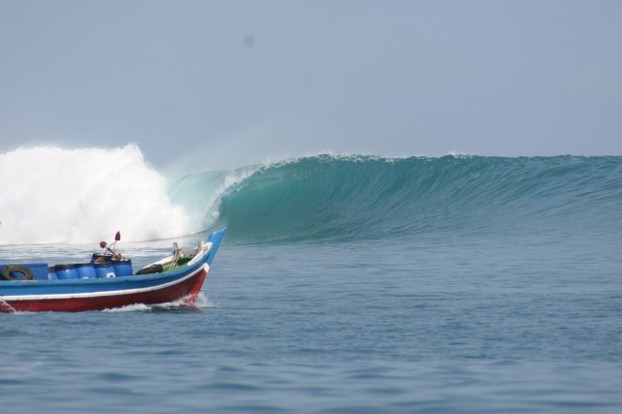
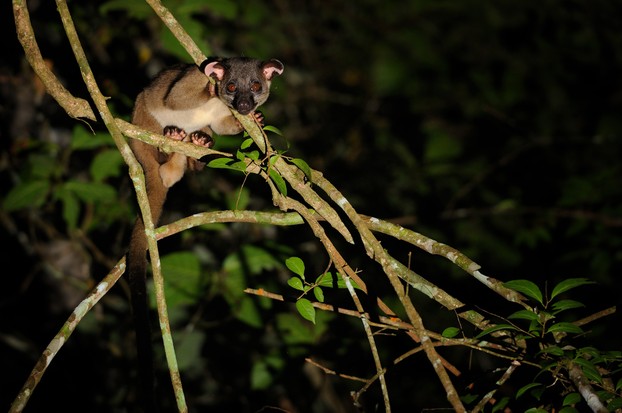

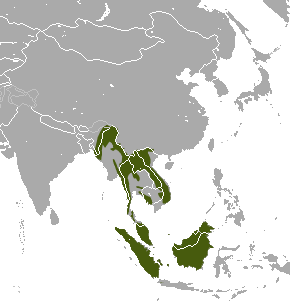

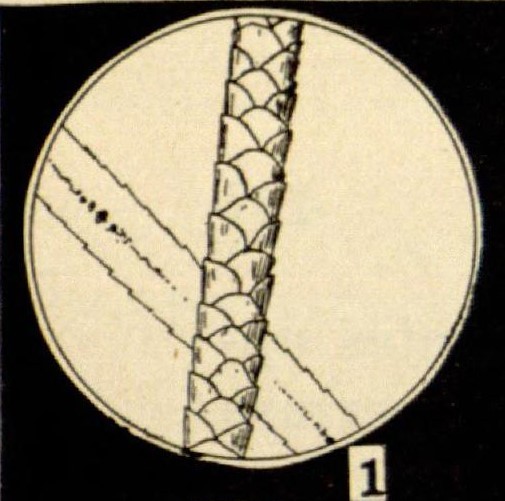
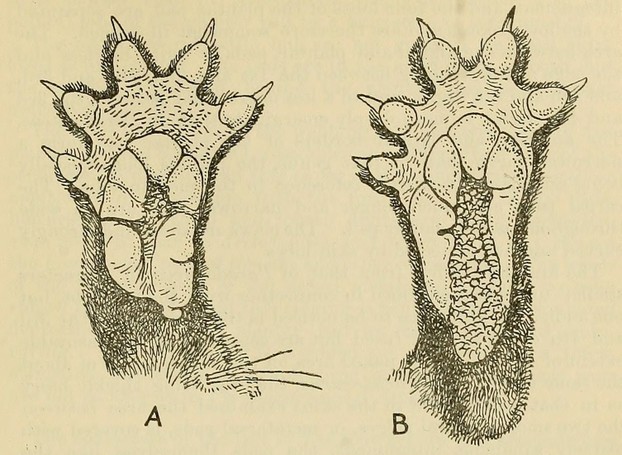
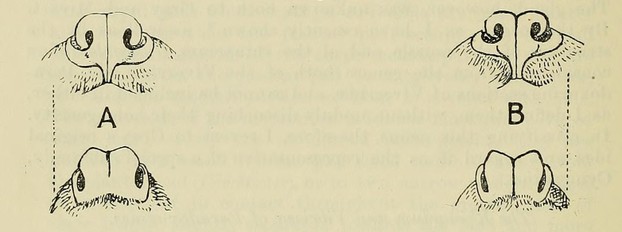
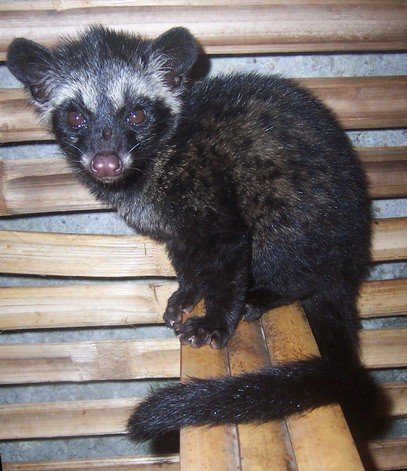






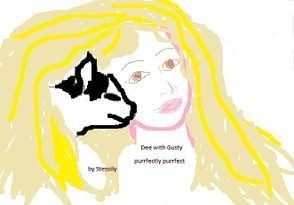
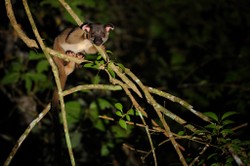

 Are Hawaiian Huakai Po Nightmarchers Avenging Halloween Thursday?on 10/02/2024
Are Hawaiian Huakai Po Nightmarchers Avenging Halloween Thursday?on 10/02/2024
 Mailing Addresses for 2023 Form 4868 Extending 1040 and 1040SR April 15, 2024, Due Dateon 04/15/2024
Mailing Addresses for 2023 Form 4868 Extending 1040 and 1040SR April 15, 2024, Due Dateon 04/15/2024
 Mailing Addresses for 2023 Forms 1040 and 1040SR Filed in 2024on 04/15/2024
Mailing Addresses for 2023 Forms 1040 and 1040SR Filed in 2024on 04/15/2024
 Mailing Addresses for 2022 Form 4868 Extending 1040 and 1040SR April 18, 2023, Due Dateon 04/13/2023
Mailing Addresses for 2022 Form 4868 Extending 1040 and 1040SR April 18, 2023, Due Dateon 04/13/2023

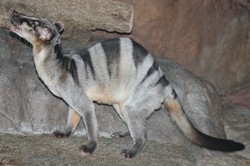
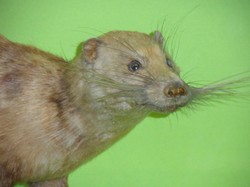
Comments